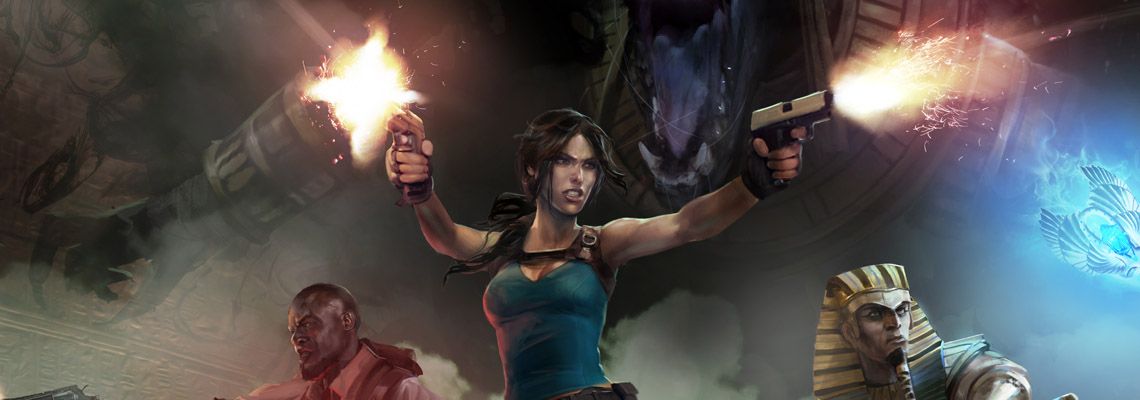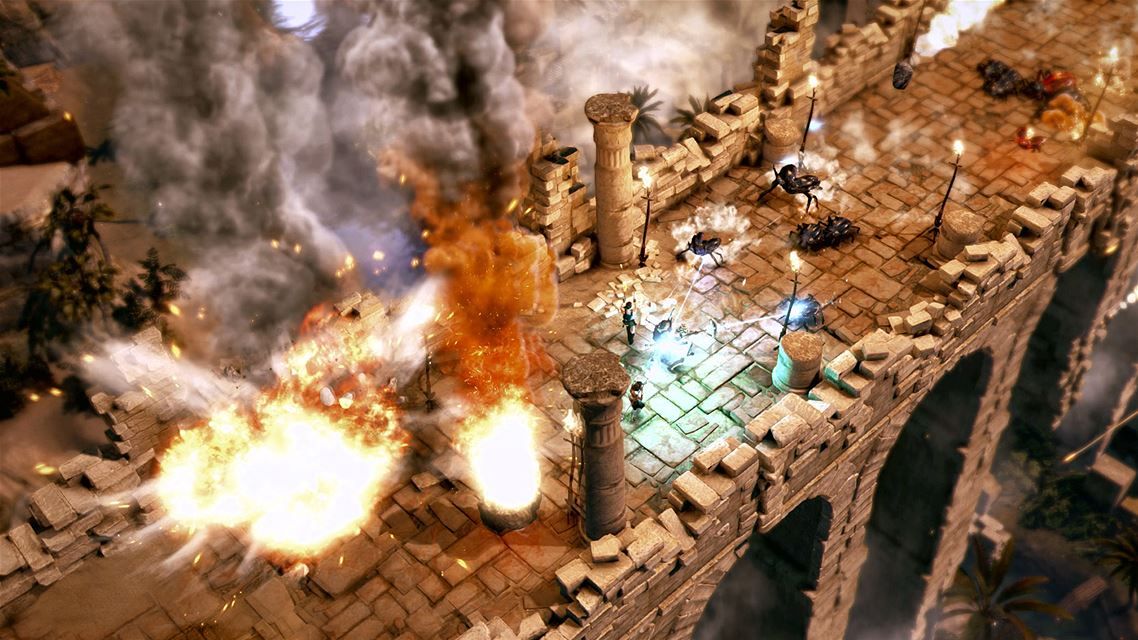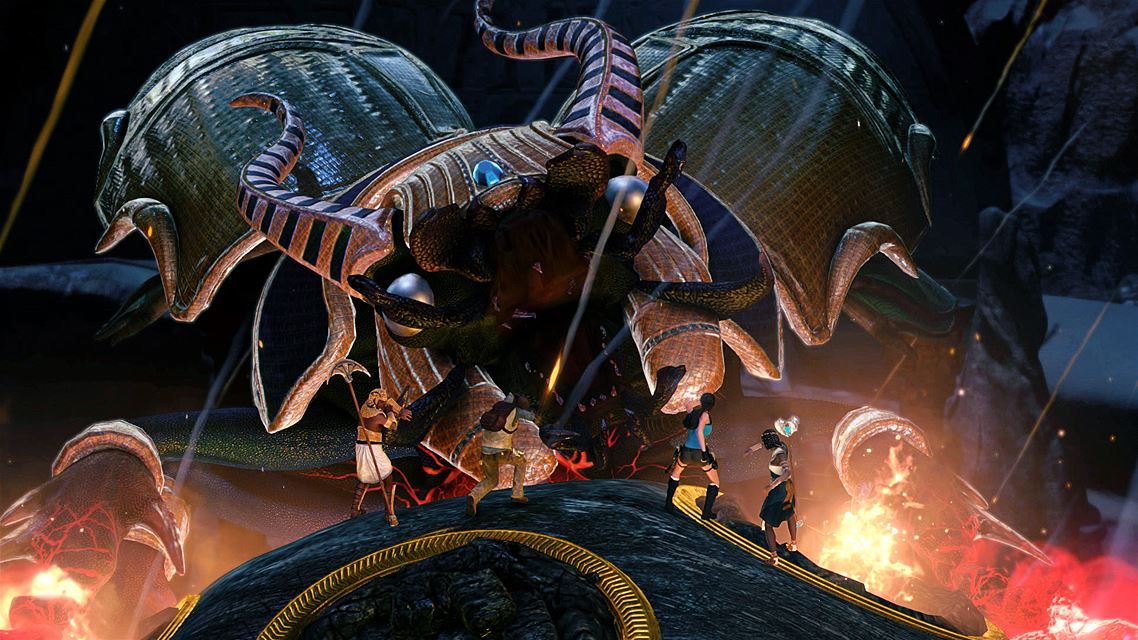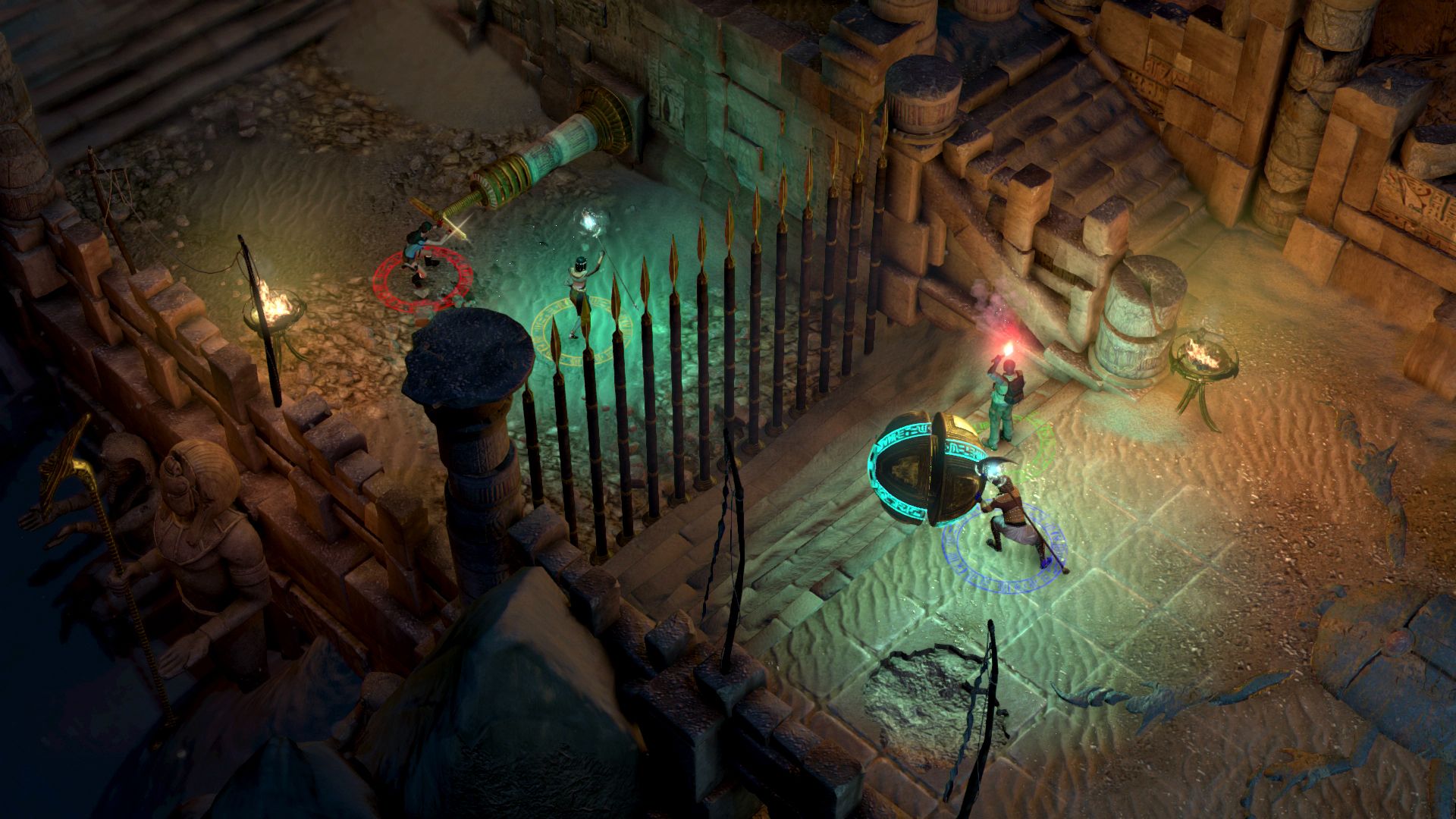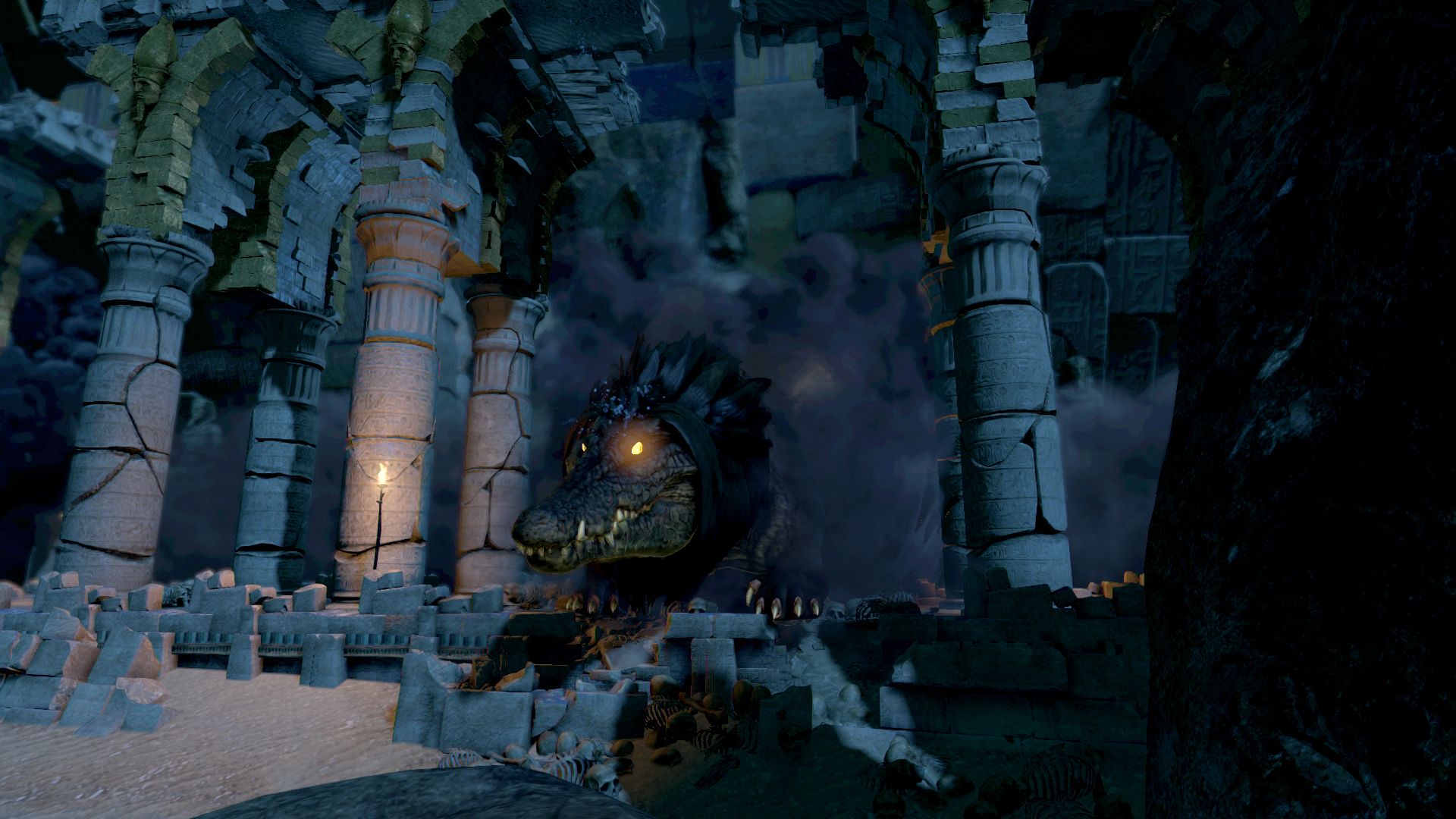Lara Croft and the Guardian of Light was a well received spin-off in the Tomb Raider franchise, enough to warrant a direct follow-up in the form of Lara Croft and the Temple of Osiris. The game once again offers all the action, puzzles and platforming typical of a Tomb Raider title, all within the confines of a isometric style adventure with strong emphasis on cooperative play. Temple of Osiris sees Miss Croft and her rival Carter accidentally getting themselves branded with a curse when raiding a structure dedicated to the Egyptian god Osiris. Soon after they find themselves caught in a family feud dating back several centuries, between Osiris and his brother Set. Lara, along with Carter and Osiris’s surviving family of gods, must work together to topple the evil lord Set in order to get rid of the curse and restore Osiris to his former glory.
Lara Croft and the Temple of Osiris plays much like its predecessor, retaining what worked well the first time and basically doing more of it. In particular, the multiplayer component which now allows up to four players jump in and explore the many tombs together cooperatively, or at times even competitively. Temple of Osiris has quite the dynamic design going for it, whether it’s the controllable day/night cycle, weather changes, or the number of players involved, the game world-- and even the design of levels-- adapt to whatever conditions you set for the adventure.
Temple of Osiris has you explore numerous tombs scattered throughout an overworld hub. The main tombs you explore as part of the main story offer considerable variety in terms of design and presentation. Switch puzzles, floor traps, environmental hazards, and a number of minions to battle, Temple of Osiris manages to keep things fun and interesting in each major stage by shaking up the layout and design progressively. Each major tomb appears to have some sort of underlying cosmetic theme, which also dictates the design of the levels such that there is almost a gameplay gimmick. Apart from these major levels, there are also plenty of optional levels and tombs that present challenging bite-sized puzzles, completion of these is worthwhile as you get rewarded with rare items.
The isometric action gameplay is usually fun thanks to graspable controls, and from a design standpoint it's fun and engaging for the most part, albeit a few nagging inconsistencies in the execution of certain puzzles. In particular, puzzles which involve navigating a giant balls that have rather sloppy mechanics/physics, resulting in an almost trial & error approach. In your first playthrough you’ll be missing platforms and falling for traps all the time, but that said death never really feels consequential thanks to the frequent checkpoints. The only really consequence of dying frequently is how it reflects on your final score.
As you work your way through the story, you’ll gain the power to change the time of day and towards the end of the campaign you will also get to change the weather. The opportunities to use these are not too pronounced in the main quest, but the post-game allows you to play around with these powers and change the world, which in turn influences the design of levels and even the nature of treasures that you discover. This is a cool system, which although feels scripted in the main story, still affords more freedom and experimentation in the post-game.
Temple of Osiris does the brand justice because you’ll be raiding tombs to gather the many collectibles scattered all over the map. This collect-a-thon focus is almost akin to the loot gathering sensibilities of isometric RPGs like Diablo, and these shiny items have a way of tempting you, so much so that you’ll put yourself in harms way-- even during the most pressing situations-- just to grab that shiny red helmet. The main collectible are gems, and they end up being used as currency to open various treasure chests, with some demanding more gems and offering better items. Items come in form of artifacts such as rings and amulets, all providing useful stat boosts such as increasing defense or improving resilience against certain elements. You’ll also find upgrades for your magical staff, which serves as both a weapon and a crucial key to solving the many runic puzzles. Finally, there is a nice assortment of firearms to play around with, and some of these can only be obtained in the optional challenge tombs. With a wide array of things to collect, there is incentive to explore every nook and cranny.
What really stands out about the whole experience are the boss battles. You’ll go up against some interesting behemoths that have a fun and classic feel in their design, almost akin to the kind of battles you’d see in 3D action platformers on the PSOne and N64. The boss designs incorporate strong platforming and puzzle solving elements, and overcoming these satisfying challenges is the real highlight of Temple of Osiris. Some bosses present themselves as panic-inducing chase sequences which can be a lot of fun. You can make a case against most aspects of Temple of Osiris, but the fun factor of the bosses is hard to argue against.
Despite the apparent emphasis on multiplayer, Lara Croft and the Temple of Osiris functions quite comfortably as a single player game. Especially when you reach the post game and are allowed to go anywhere to discover new secrets and challenges. Throwing more players into the mix, however, does more than just add extra helping hands, instead shaking up the design and flow of the quest considerably. The puzzles will require different solutions depending on the number of players involved, and even basic navigation of the tombs alters considerably for the better. At its core, the co-op design works really well and is a lot of fun, encouraging players to work together in creative ways. Of course, this component works seamlessly well when it's done locally over a good old fashioned couch session. But when it comes to online sessions, that’s when things start to fall apart.
The online multiplayer feels like an afterthought because of how it has been implemented, almost discouraging players from trying it . The mode proves to be an inconvenience to everyone but the player that is hosting a session, because in order for a guest to join in they will have no choice but to allow the game to overwrite their campaign progress with that of the host’s. Overwriting wipes away all your story progress, including the areas and features you unlock, but still allows you to keep all your relics, weapons and other collectibles. Granted Temple of Osiris isn't terribly long at around 5-8 hours, but it isn't exactly short enough to be overwritten every time you want to play with your friends. This is especially inconvenient because then you miss out on all the post-game freedom. The price of having a good time with your friends online isn't fair, not when you have to slough through the campaign from fresh each time. Once you’re out of a session and progressing on your own, you’ll find some weird bugs like the order of cinematic cutscenes getting all messed up. The implementation of online play is simply botched.
Lara Croft and the Temple of Osiris isn't a particularly outstanding game from a visual standpoint, but the graphics are nice and clean with particle effects being put to good use. The soundtrack has its moments, in particular the main menu theme which immediately blares at you with its dramatic orchestra. It may not be a major visual and aesthetic showcase, but at least the boss designs are cool.
Closing Comments:
Lara Croft and the Temple of Osiris has a lot of going for it. The main campaign is fun to sit through with its progressive variation in puzzles, platforming and blazing action. The boss battles are the real treat in this package, and the element of collecting and exploring keeps things engaging and interesting even after the credits have rolled. Despite issues with some of the puzzle designs, there’s a lot to enjoy on your own, and even more so in local 2-4 player co-op where the inclusion of additional players freshens up the design and gameplay. The major glaring fault in this package is how its online features have been implemented, with strange bugs and forceful overwriting of campaign progress.

